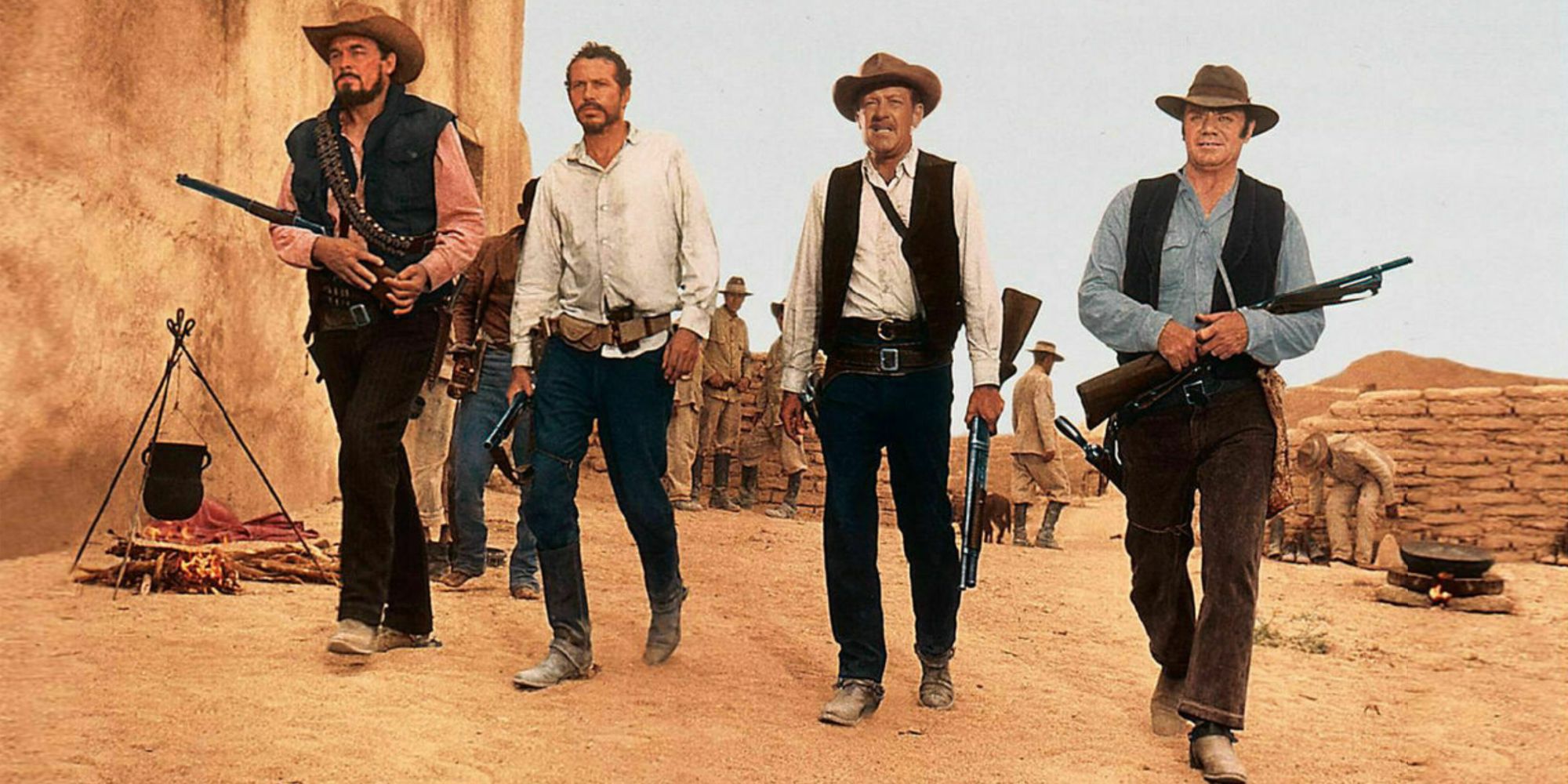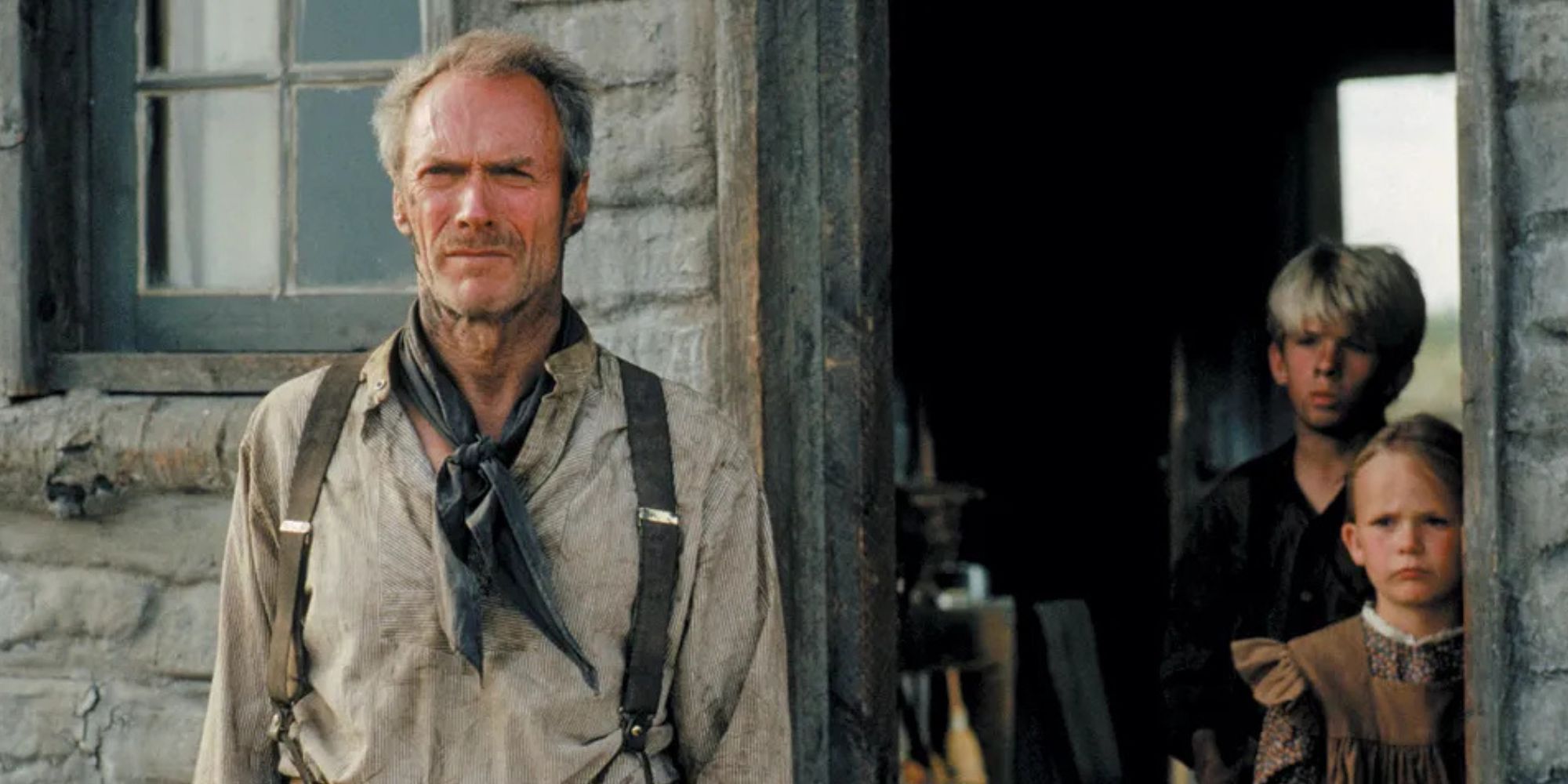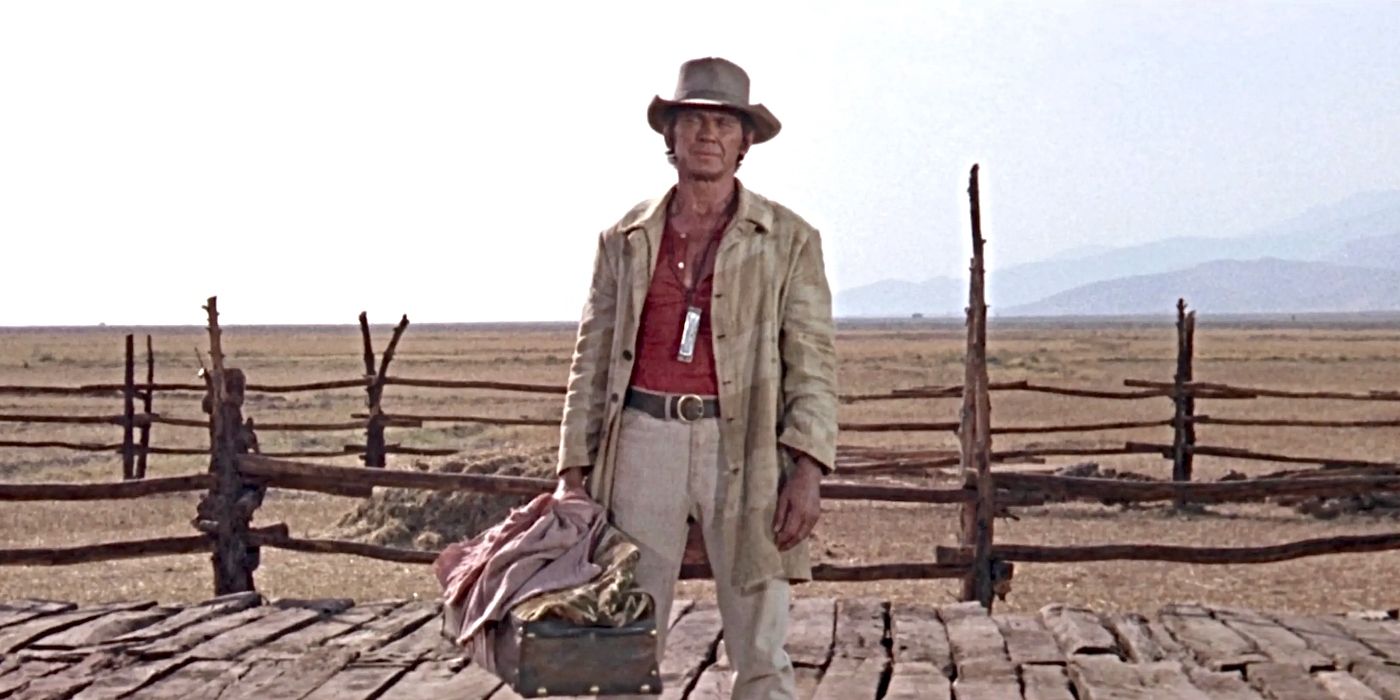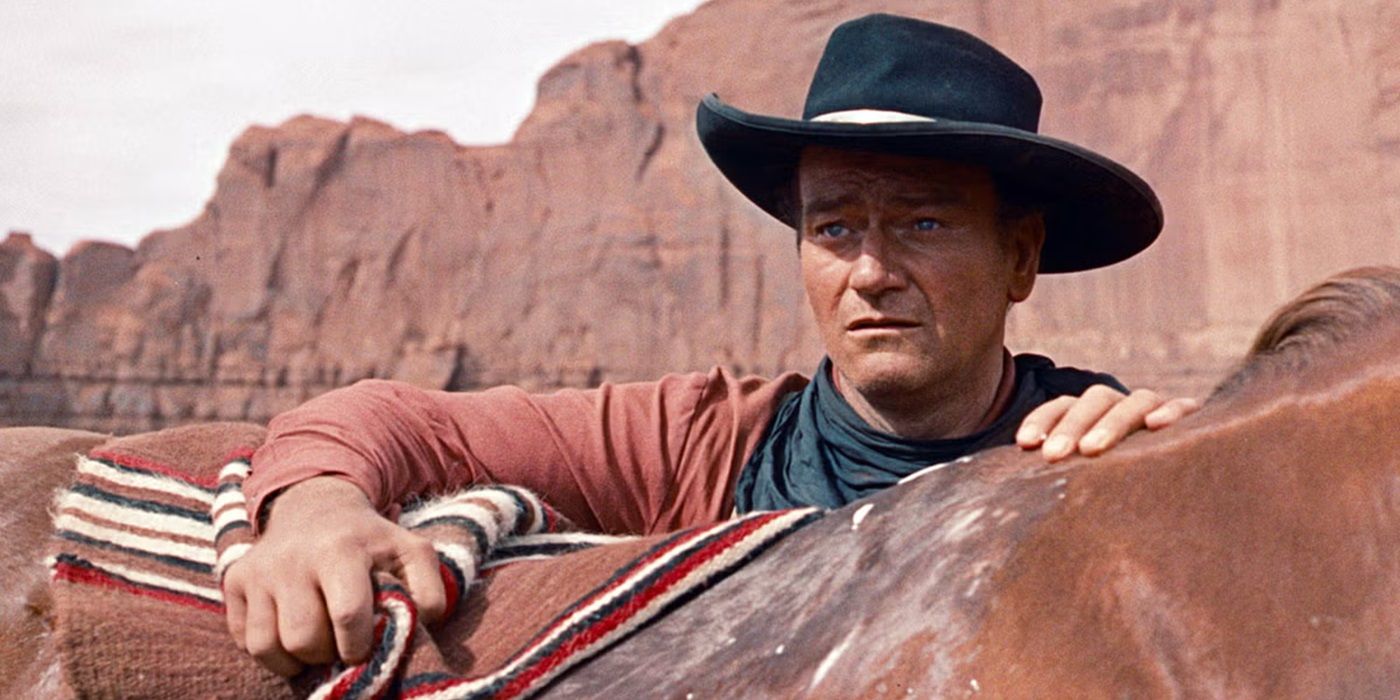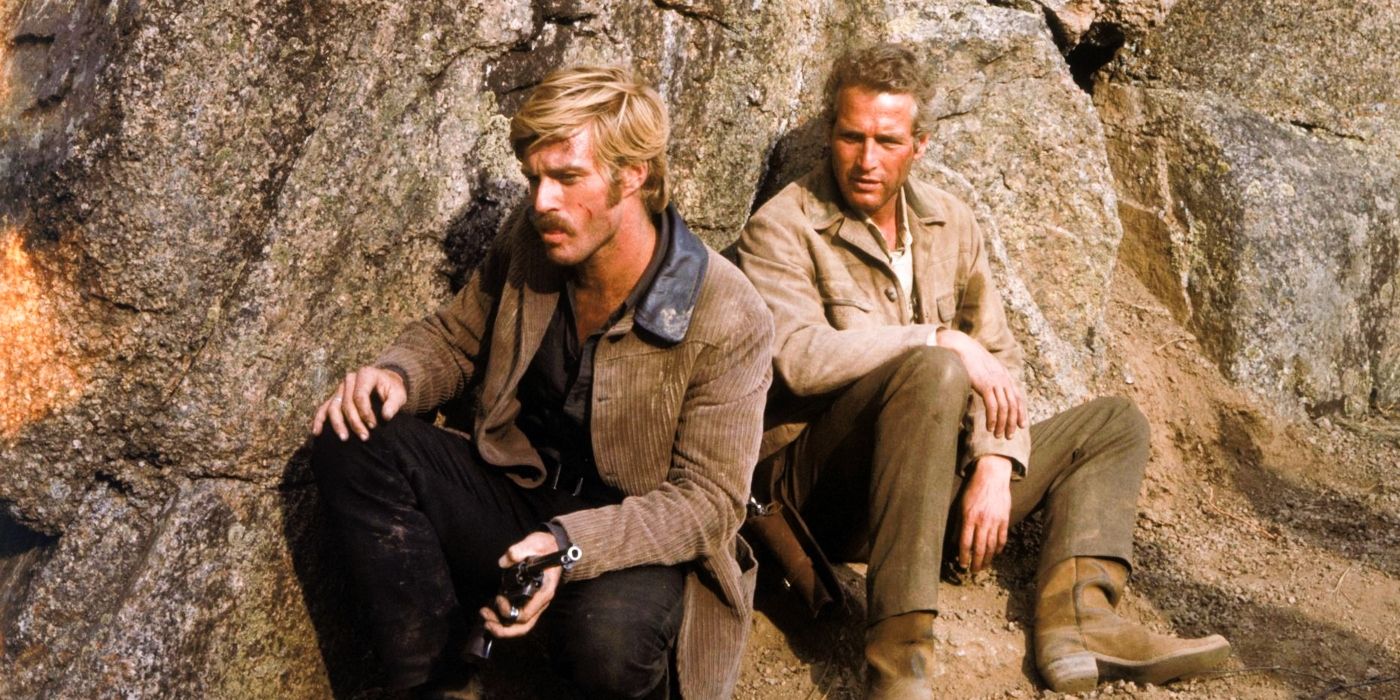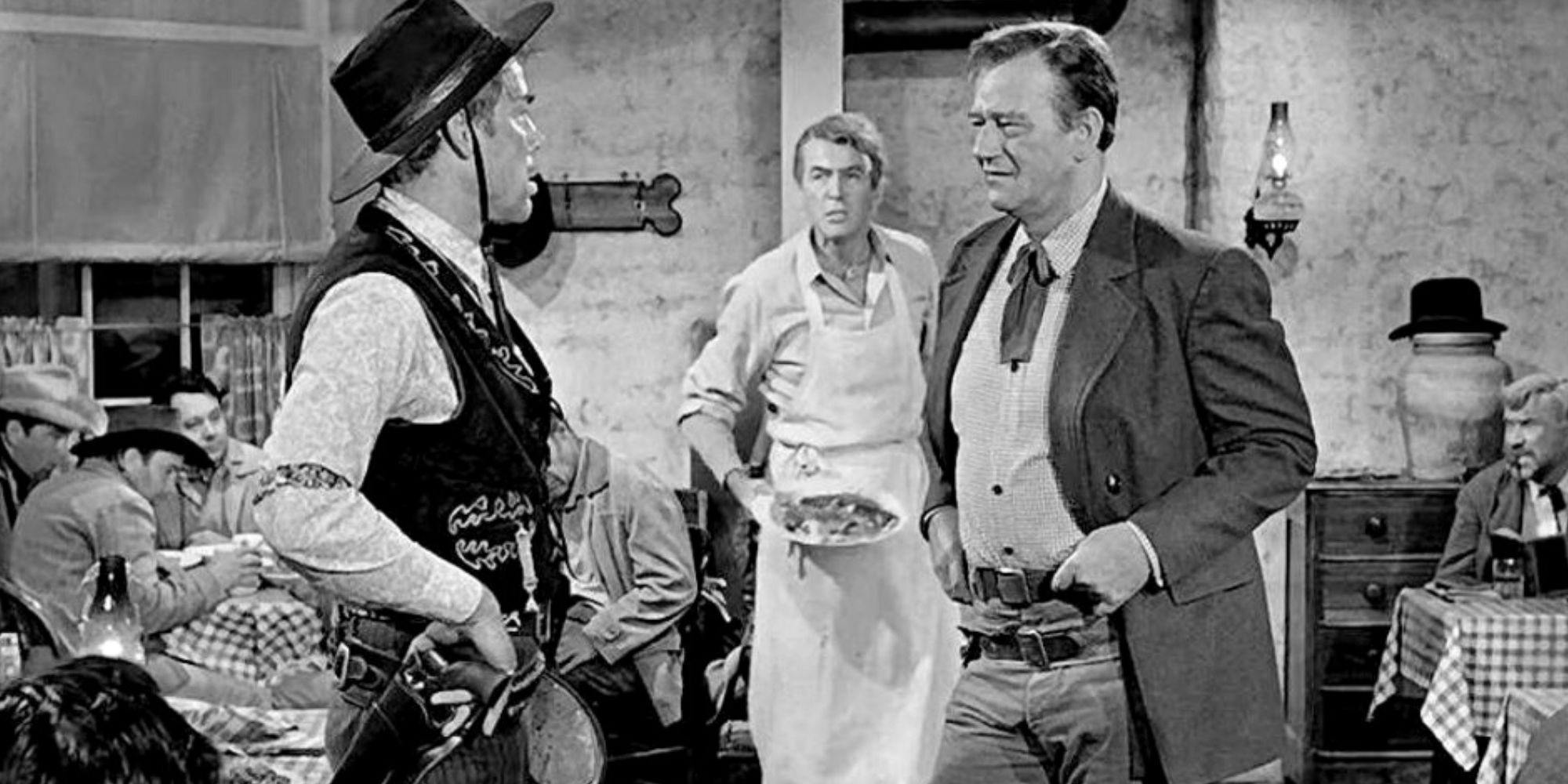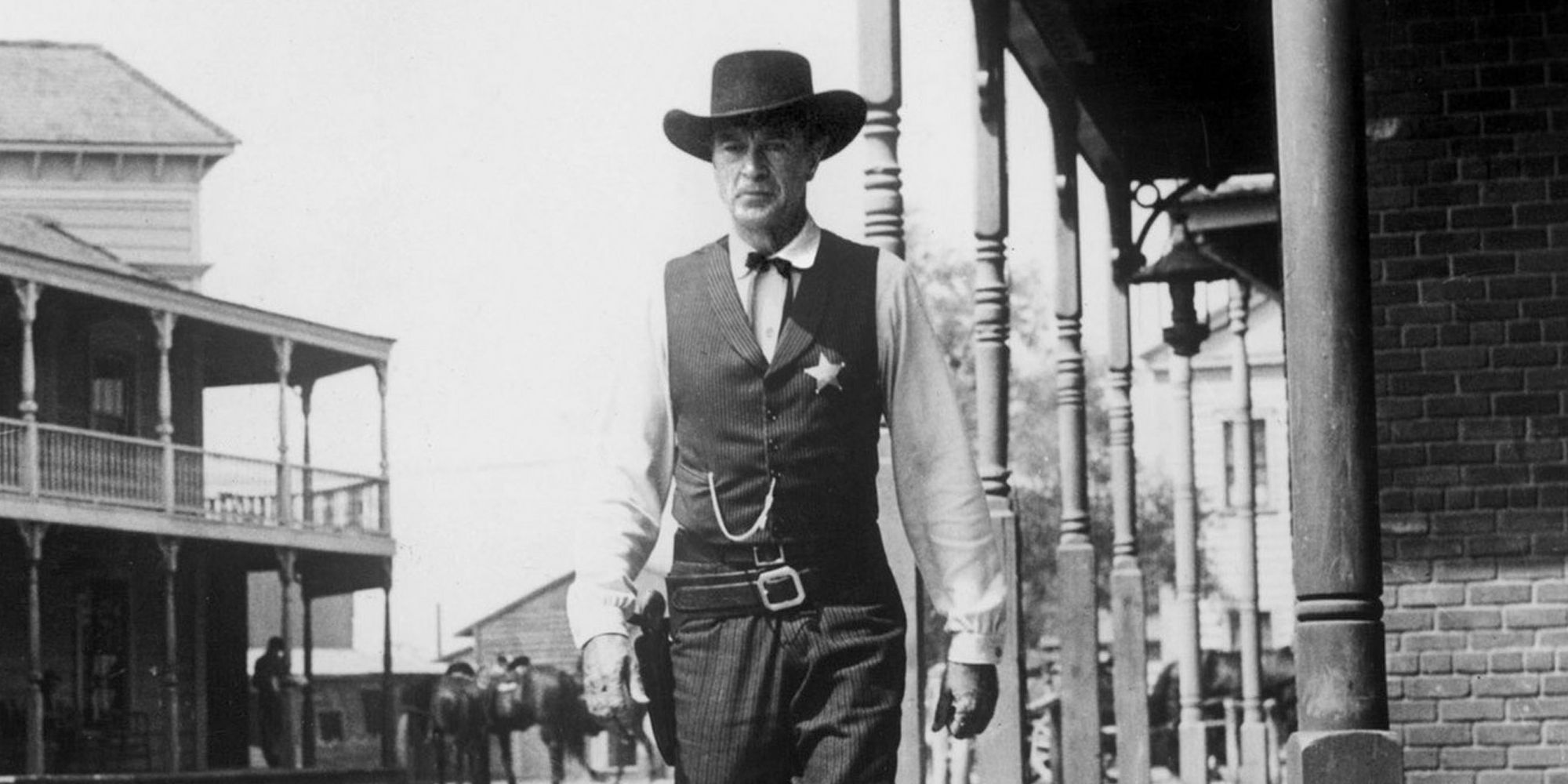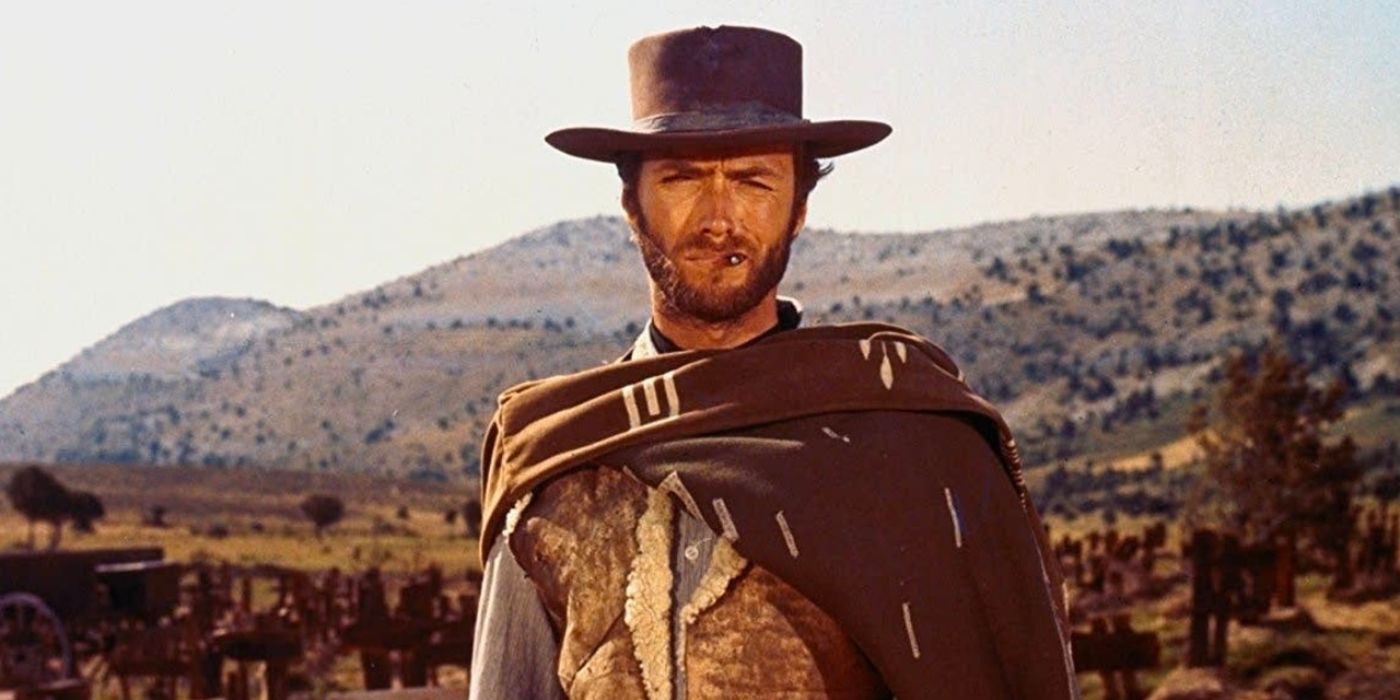10 Classic Westerns Everyone Needs To Watch Once

Reflecting on the history of cinema, going right back to its origins well over 100 years ago, it is difficult to think of a genre that has defined it quite like the Western. Using gorgeous, sweeping shots to bring tremendous gravitas to stories of morality, justice, and individualism that transpire, most commonly, on the expanses of the frontier, the genre has produced a great many classics over the years. Among these are epic dramas that delve into the nuanced psyches of their protagonists and snarling action flicks that lay bare the violence of the Old West.
As such, choosing just 10 Western masterpieces that demand to be watched at least once in one’s lifetime is no easy feat, and it has seen such gems as Rio Bravo, Red River, and The Great Silence miss the selection. The films that have made the cut stand as the Western’s greatest triumphs, icons of cinematic history that have endured for decades as some of the best and most awe-inspiring pictures ever made.
10
‘Shane’ (1953)
Directed by George Stevens
Strikingly violent and ruthless, and yet flaunting moments of profound humanity as well, Shane is a delicate picture that both deconstructs the mythic qualities of the genre and acknowledges why they are so prominent and appealing. It follows Shane (Alan Ladd), a skilled though casual gunslinger who settles down as a farm hand on a homestead in a small Wyoming town. However, buoyed by his affection for the family and spurred by the intensifying animosity between the townsfolk and a ruthless cattle baron, Shane realizes he must take up arms once again.
It excels at its fine balancing act. It is an exploration of the bitterness of the times, when homesteaders and cattle ranchers were so vehemently at odds, but also a touching tale of human connection. It is at once a brutal depiction of the savagery and greed of the Old West and, through the eyes of young Joey (Van Heflin), a spirited exhibition of why such a time and its violent figures are so enchanting. While audiences today may know it because of Logan, Shane is still a divine masterpiece of Western cinema that demands to be viewed even more than 70 years since its original release in 1953.
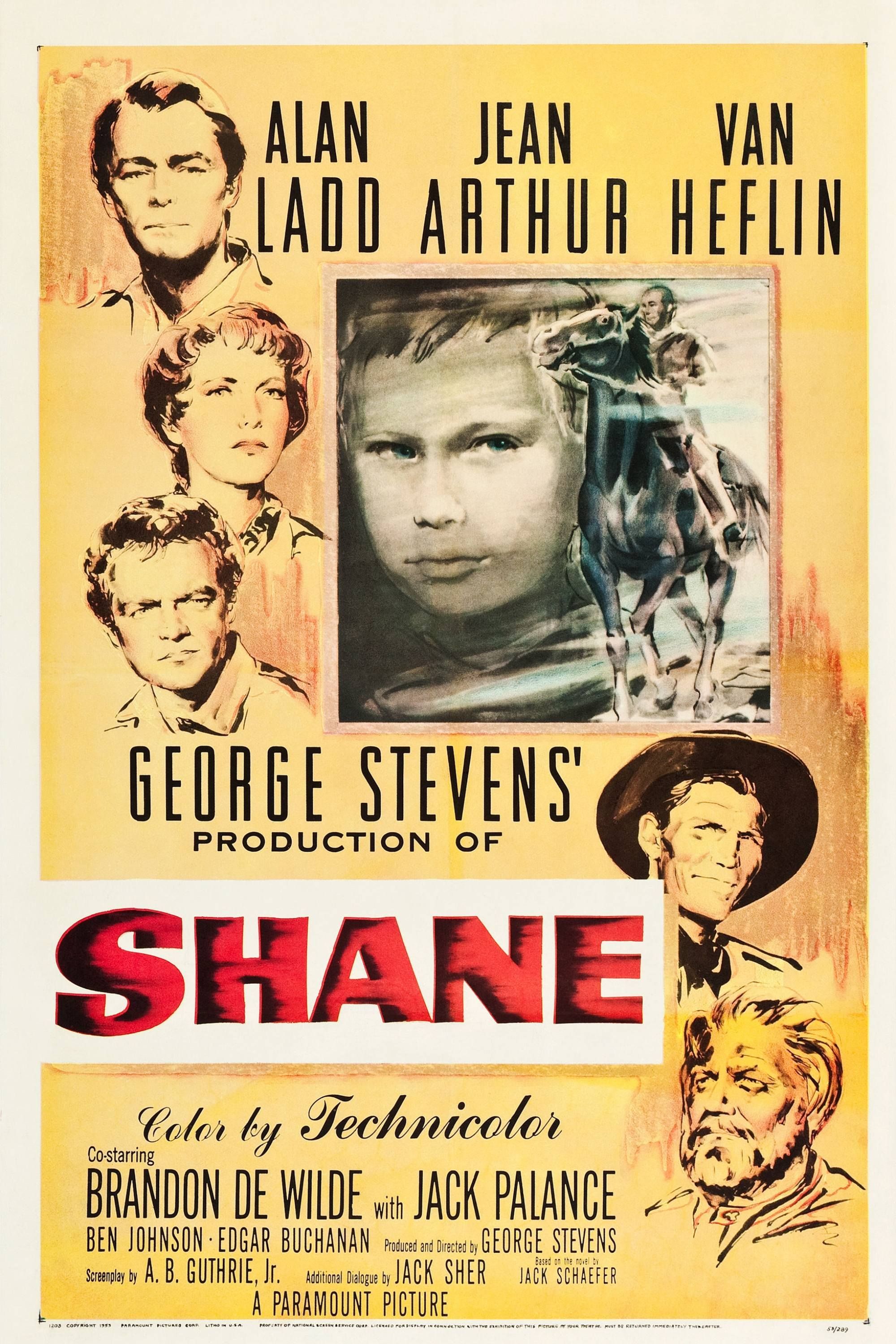
Shane
- Release Date
-
August 14, 1953
- Runtime
-
118 Minutes
- Director
-
George Stevens
9
‘Stagecoach’ (1939)
Directed by John Ford
While it is by no means the first Western film in cinematic history, Stagecoach does occupy a certain pioneering role in the genre’s exploits on the silver screen. Featuring John Wayne in his breakthrough performance and marking his first credited collaboration with director John Ford, the 1939 masterpiece follows a group of strangers with diverse and conflicting personalities as they travel by stagecoach unprotected through Apache territory en route to Lordsburg.
Despite running at a relatively brief 96 minutes, Stagecoach occupies the grandiosity and gravitas that would later come to define the genre. Bolstered by Ford’s incredible characterizations, a mesmerizing visual display, and a sharp story that examines the morality of the travelers in intriguing detail, the film is, in itself, an entrancing study of humanity. In the context of cinematic history, it is nothing short of a genre-defining breakthrough, a picture of such artistic mastery that it elevated the Western from being forgettable fodder to being one of the most spectacular and profoundly powerful styles of story the medium had ever seen.
8
‘The Wild Bunch’ (1969)
Directed by Sam Peckinpah
Following the success of Stagecoach, huge portions of the 1940s, ‘50s, and ‘60s belonged to the Old West. However, the genre declined through the latter part of the 1960s, while cinema was changing significantly through the onset of the New Hollywood movement, an industry shift towards greater realism and more confronting stories. At this juncture, The Wild Bunch emerged as a polarizing and punishing classic, with the Sam Peckinpah film following four aging outlaws as their plan to execute one last heist goes horribly wrong and lands them in a ruthless border town, in the sights of a vicious bounty hunter.
Western cinema during its heyday had a tendency to reduce shootouts and duels to glamorized action set pieces, exciting bravura moments where the hero would take down the villain. The Wild Bunch strips all notions of the glamorization of violence away in emphatic fashion. While it received mixed reviews upon release, the movie has endured as a scorching masterpiece that demystifies the mythic nature of Western cinema and grounds it in a brutal story of lawlessness and death.
7
‘Unforgiven’ (1991)
Directed by Clint Eastwood
Released in 1991, Unforgiven was a major title in the resurgence of Western cinema through the 1990s and into the 21st century. Directed by and starring Clint Eastwood, the harrowing revisionist Western follows an aging, once-notorious gunfighter who teams up with an old friend and a boastful youth to claim the bounty placed on a cowboy who disfigured a prostitute.
Grueling, graphic, and gunning down all notions of Western heroism and honor, Unforgiven tears down the genre’s mythic qualities with a story focused on irredeemable figures and lives defined by violence and cruelty. Also investing heavily in the theme of masculinity and how it is intrinsically entwined with the genre, it stands among the finest revisionist Westerns of all time. A meditation on age, reputation, violence, and justice, Unforgiven sees Clint Eastwood operating at his very best to deliver one of the most significant and essential Western films to have ever graced the screen.
6
‘Once Upon a Time in the West’ (1968)
Directed by Sergio Leone
As operatic as it is ceaselessly intense, Once Upon a Time in the West stands as one of Sergio Leone’s defining masterpieces, a sprawling epic of greed, violence, and revenge set amid the political turmoil of the expanding railroad. It sees a railroad tycoon hiring a sadistic mercenary to intimidate the owners of a valuable plot of land into selling. When Frank (Henry Fonda) kills the initial owner, his attention turns to the deceased’s young widow, who is protected by a rugged outlaw and a mysterious gunslinger.
Every element of the picture is handled with both perfection and grandeur, be it the sweeping visuals of the Old West, the simmering story of morality amid lawlessness, or Ennio Morricone’s typically enchanting score. Running for 165 minutes, Once Upon a Time in the West is a gloriously inflated odyssey that epitomizes the harshness of the Old West yet clings on to a sense of humanity. It relishes the vastness of its grandiosity yet grasps the essential little details along the way. It is heralded by many to be the ultimate spaghetti Western masterpiece and is one of the genre’s definitive, must-see masterpieces.
5
‘The Searchers’ (1956)
Directed by John Ford
The collaborations between John Ford and John Wayne were the backbone of Western cinema in Hollywood through the mid-20th century. In this regard, there are few pictures more exceptional and enduring than The Searchers. A ruthless tale of simmering hate and manic obsession, it follows Civil War veteran Ethan Edwards (Wayne) as he sets out to find his niece, who has been abducted by Comanche Indians, with only the young woman’s fiancé joining him on the quest.
Ethan is, by a comfortable margin, the most compelling and complex character Wayne and Ford ever conceived, a figure of imposing stature. At a glance, Ethan embodies the Western heroes’ presence of courage and conviction, and yet his motivation stems more from a festering, racist hatred than traditional morals. Bolstered by a gorgeous visual display and its penchant for confronting dark ambivalence, The Searchers is one of the most timeless of Wayne’s films, and its visceral impact remains very much intact when revisited today.
4
‘Butch Cassidy and the Sundance Kid’ (1969)
Directed by George Roy Hill
A subversive Western biopic that coasts by on the charms of its leading men, Butch Cassidy and the Sundance Kid overcame initial critical indifference to be one of the most defining titles of 1960s cinema. It follows the two titular outlaws in the aftermath of a heist gone wrong, as they are forced to go on the run as a posse of lawmen hunts them down. Making for Bolivia with Etta Place (Katharine Ross), Butch Cassidy (Paul Newman), and the Sundance Kid (Robert Redford) try living the high life as the world they know crumbles around them.
Rather than aspiring to be the same Western drama that had been on screens for the 30 years prior, Butch Cassidy and the Sundance Kid instead plays as a joyful meditation on friendship, an exploration of two of the Old West’s most notorious figures laced with lyricism and love stories more so than lead and lawlessness. Light-hearted and likable, the film offered something unique and refreshing at a time when the Hollywood Western was fading. These qualities have endured, making Butch Cassidy and the Sundance Kid one of the most intriguing and entertaining movies in the genre’s history on the screen.
3
‘The Man Who Shot Liberty Valance’ (1962)
Directed by John Ford
“This is the West, sir. When the legend becomes fact, print the legend.” Encapsulated by that brilliant quote that embodies the mythic presentation of the Old West and its figures, The Man Who Shot Liberty Valance stands as the most respected of Wayne and Ford’s many collaborations. It unfolds as U.S. Senator Ransom Stoddard (James Stewart) returns to the town of Shinbone to attend the funeral of Tom Doniphon (Wayne). While there, he recounts his past to a local reporter, sharing how he, as a lawyer, and Tom, as a hardened gunman, each played a part in the downfall of notorious criminal Liberty Valance (Lee Marvin).
Juggling the intrigue of the Old West and a keen focus on politics in America, The Man Who Shot Liberty Valance is one of the greatest ever assessments of the nation’s identity that has ever been put to screen. Only bolstered by its magnificent ensemble cast and John Ford’s sharp direction, the 1962 classic is one of the finest films of its decade, one of the greatest pictures of its genre, and one of the most essential viewings for anyone who loves movies.
2
‘High Noon’ (1952)
Directed by Fred Zinnemann
Heralded by many as being the first revisionist Western of all time, High Noon is a phenomenal departure from genre convention that absorbs viewers with its impeccable grasp on suspense and its searing exploration of such themes as justice, honor, and the law. Gary Cooper stars in an Oscar-winning performance as U.S. Marshal Will Kane, a recently married man readying to leave the town—and his job—when he learns a crook he once put away has been released and traveling to Hadleyville for revenge. Unfolding in real time, Kane’s efforts to recruit deputies to stand alongside him fall flat as the townsfolk’s cowardice sees the Marshal having to face his assailants alone.
Its impact has not waned over the decades, with High Noon still standing as a richly compelling analysis of the Western hero, and how the mythic nature of such figures clashes with the cold reality of the world. It not only deconstructed Western cinema but also re-imagined it, encoding it with hard-boiled truisms that have endowed it with a timelessness that many of its contemporaries lacked. Its story of responsibility, isolation, and duty is arguably even more powerful today, making High Noon perhaps the most essential Western film of its decade.
1
‘The Good, the Bad and the Ugly’ (1966)
Directed by Sergio Leone
Often cited as being the greatest Western of all time and one of the best pictures to have ever graced the screen, The Good, the Bad and the Ugly is a Western masterpiece of uncommon excellence that, even amid a filmography as illustrious as his, stands as Sergio Leone’s magnum opus. Set during the Civil War, it follows the uneasy partnership between two amoral crooks who each know part of the puzzle that will guide them to a stash of Confederate gold. On their tumultuous journey, they find themselves being tracked by a third gunslinger, the sadistic mercenary Angel Eyes (Lee Van Cleef).
There is hardly an element of the film that hasn’t become iconic. Its music is perhaps the best-known film score of all time, its performances are ceaselessly marvelous, its story ensnares with its scope and violence, and its final standoff makes for arguably the greatest scene in cinematic history. As such, The Good, the Bad and the Ugly isn’t just the quintessential Western, but a must-see movie from any genre, a medium-defining masterpiece that is every bit as entertaining and enthralling today as it was upon release back in 1966.

